Close acquaintance with the European mistletoe Viscum álbum.
A few days ago, passing by a flower shop, I saw dried cotton sprouts wrapped in cellophane film, which reminded me of my school years, a geography lesson, in which the teacher promised to increase the score to those who find information about a plant that bloomed during its flowering period change the color of their flowers four times.
At that time, I did not have the Internet and Google, but there were libraries that I periodically visited.
Then, I had to dig through a lot of literature but in the end, I found two plants that change flower color four times, these are Victoria amazonica (Victoria amazonica) and (Gossypium) cotton.
Interestingly, the teacher, giving us the task, thought only of the Amazonian Victoria and he learned about cotton from me.
Since then, I understood that theoretical knowledge in areas in which you may not be a great specialist, can bring practical benefits, like getting a good grade in class, lol.
The topic of my my post may have a practical application, for example, in the case if you are a schoolboy, or your children, and in the lesson they are asked to list evergreens.
As a rule, if we are not talking about the tropics, about mid-latitude plants, then children will list conifers, but it is worth remembering the higher plant, which is a parasite on deciduous trees, and shows off in winter with its bright, green color, while when all the leaves of the tree on which it settled had already fallen.
This plant is European mistletoe, or Viscum álbum.
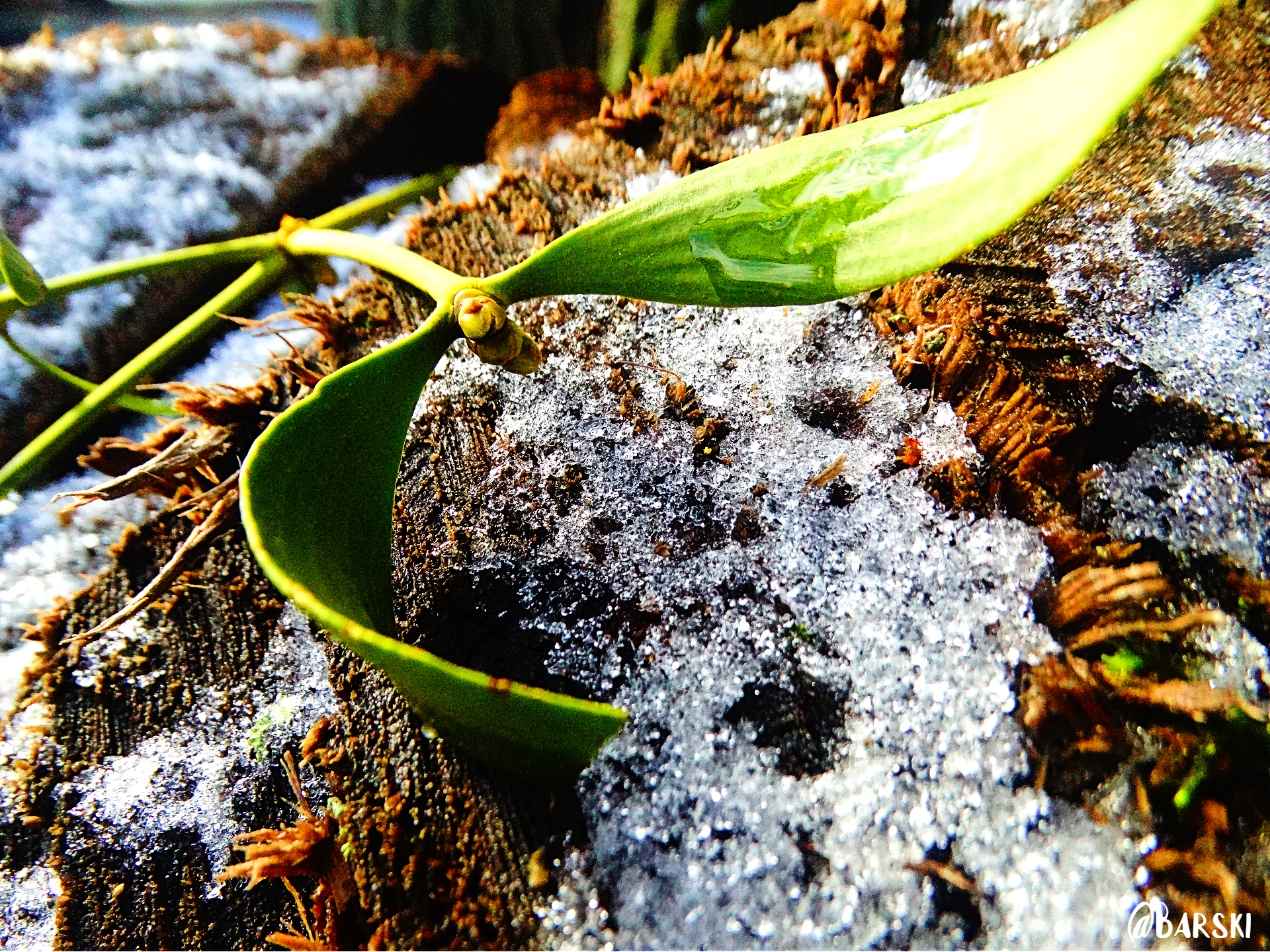
As a rule, this plant settles high in the crown of trees and is difficult to see from a close distance.
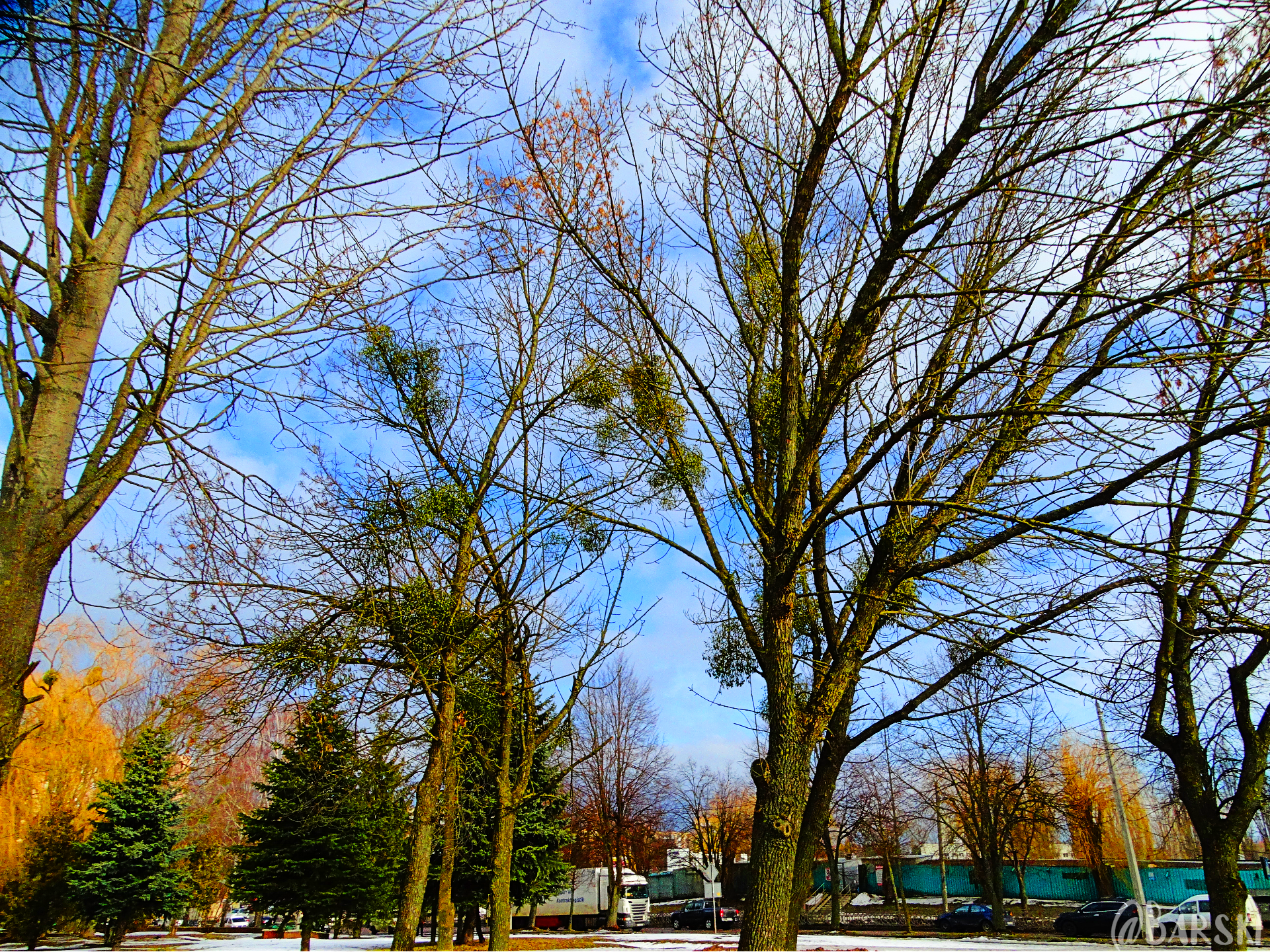
But, the night before I took these pictures, there was a strong wind that tore off some branches of the European mistletoe, and this gave me the opportunity to get to know her better.
As you can see snow and frost do not harm this plant it remains no less green than spruce and pine.
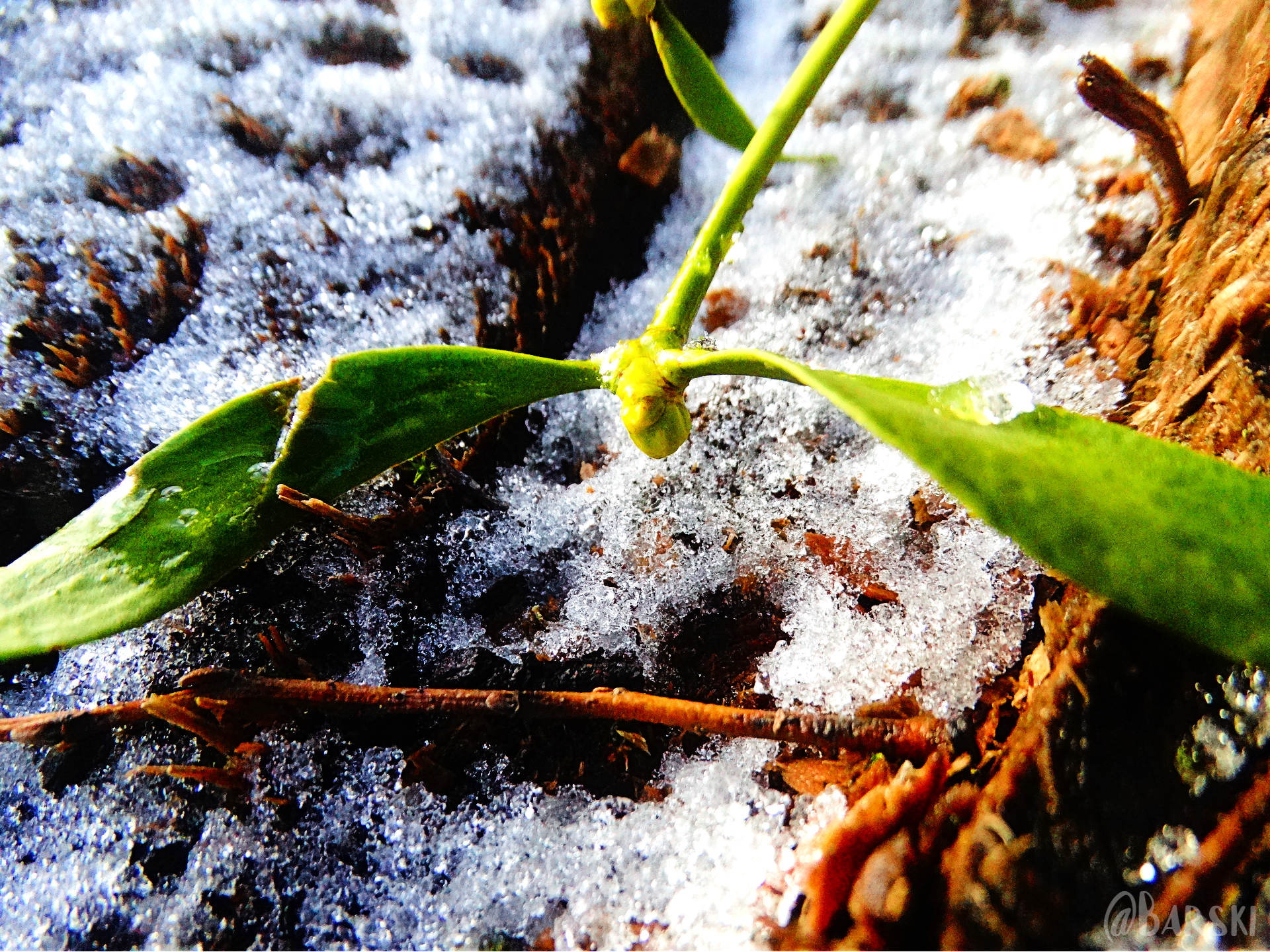
This plant gets on the branches of trees thanks to the birds that feed on its berries and seeds.
Seeds, sticky, and, having fallen on the branches of a tree together with bird droppings, germinate and a new, spherical plant appears.

As you can see in this photo, the berries are fully ripe in February.
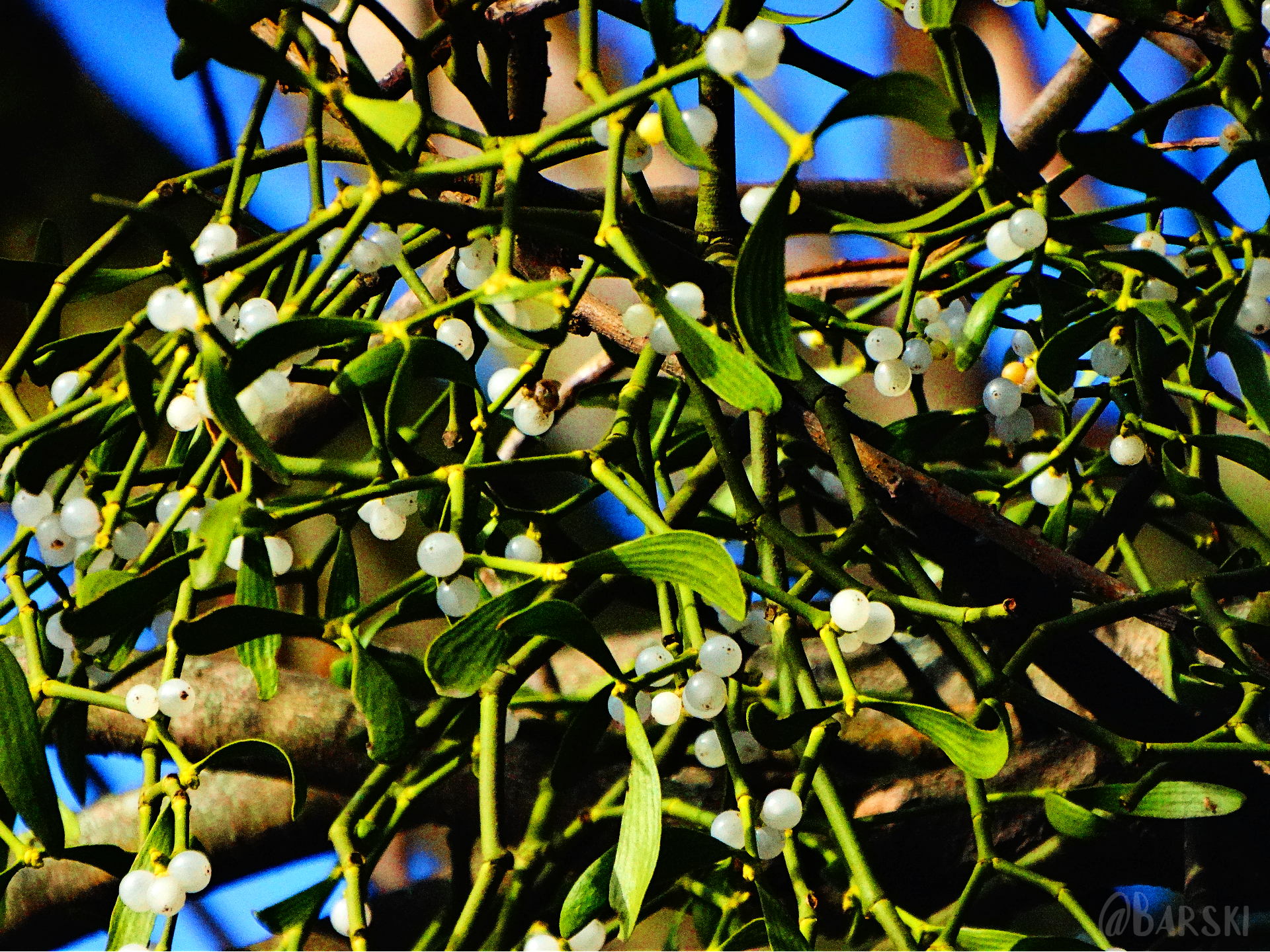
And so, look like buds that have not yet become berries.
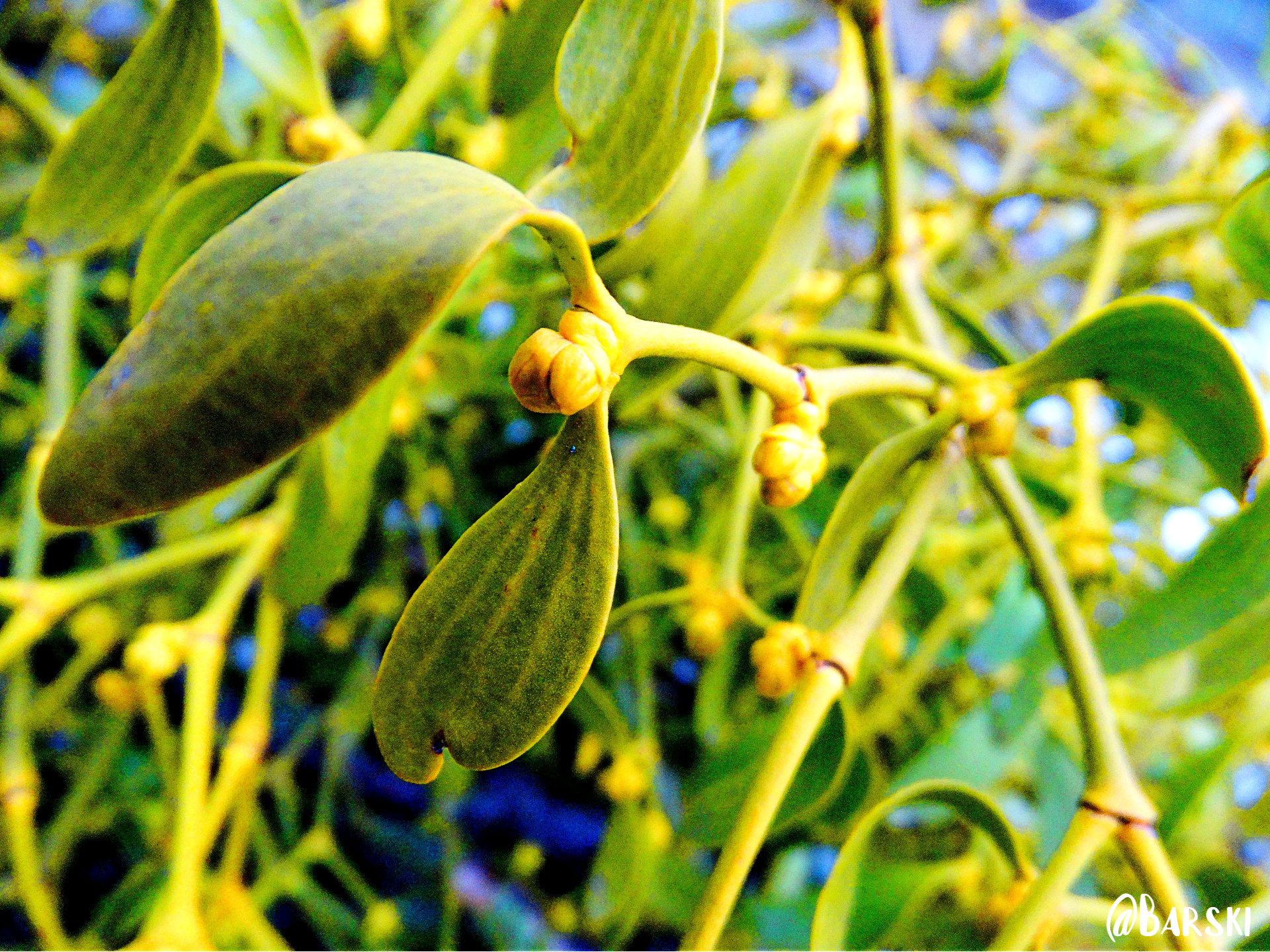
All parts of this plant, leaves, shoots and berries, are poisonous to humans, but at the same time they are used as a medicine against epilepsy and hysteria.

A ripe berry is very similar to a tick, you may have seen a tick that drank blood. it is white in color and translucent, like these berries. I doubt that I would want to taste a berry that looks like a biting parasite. lol.
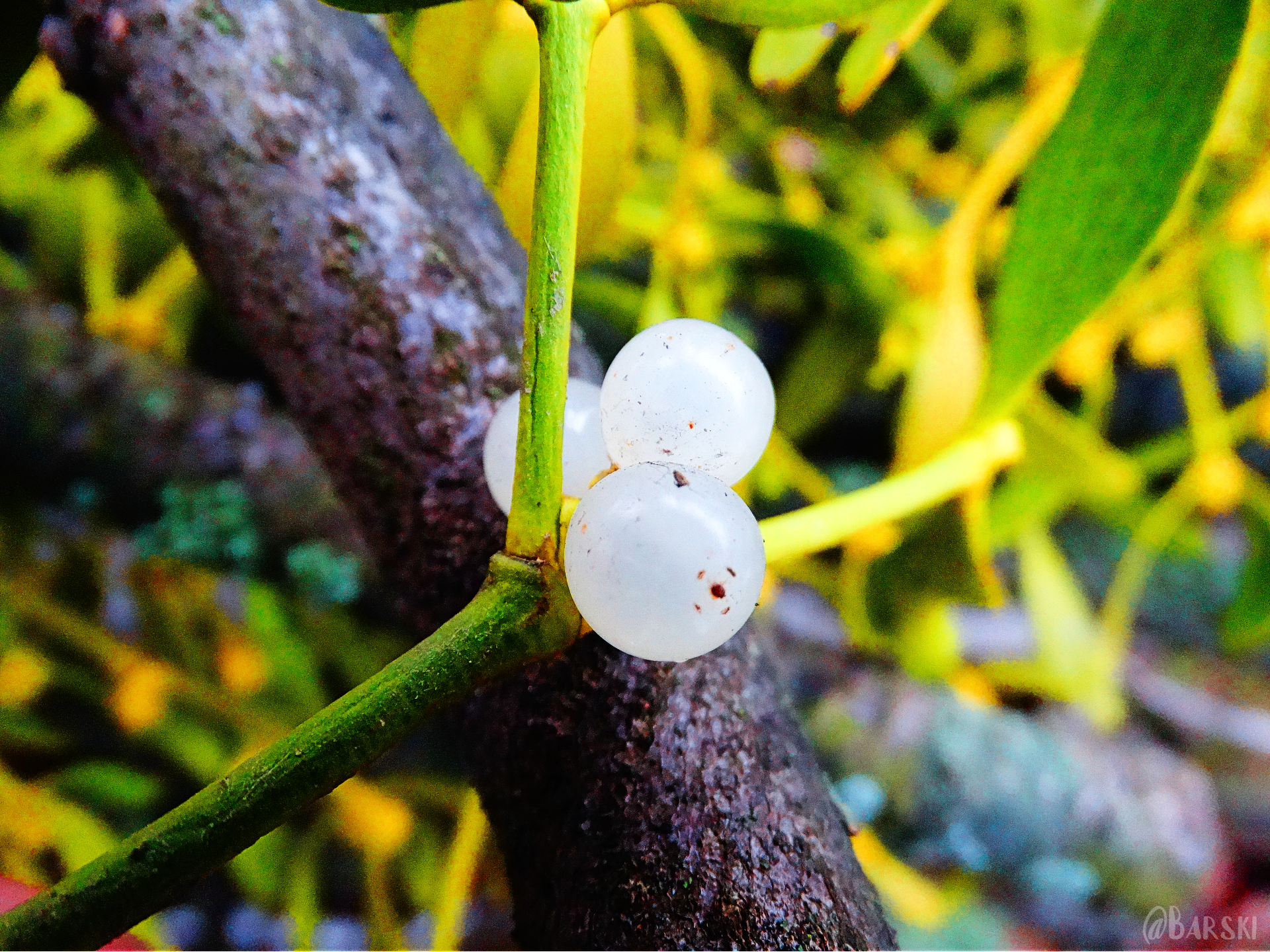
Now, perhaps you have learned a little more about the plant, in order to see which, you need to lift your head high.
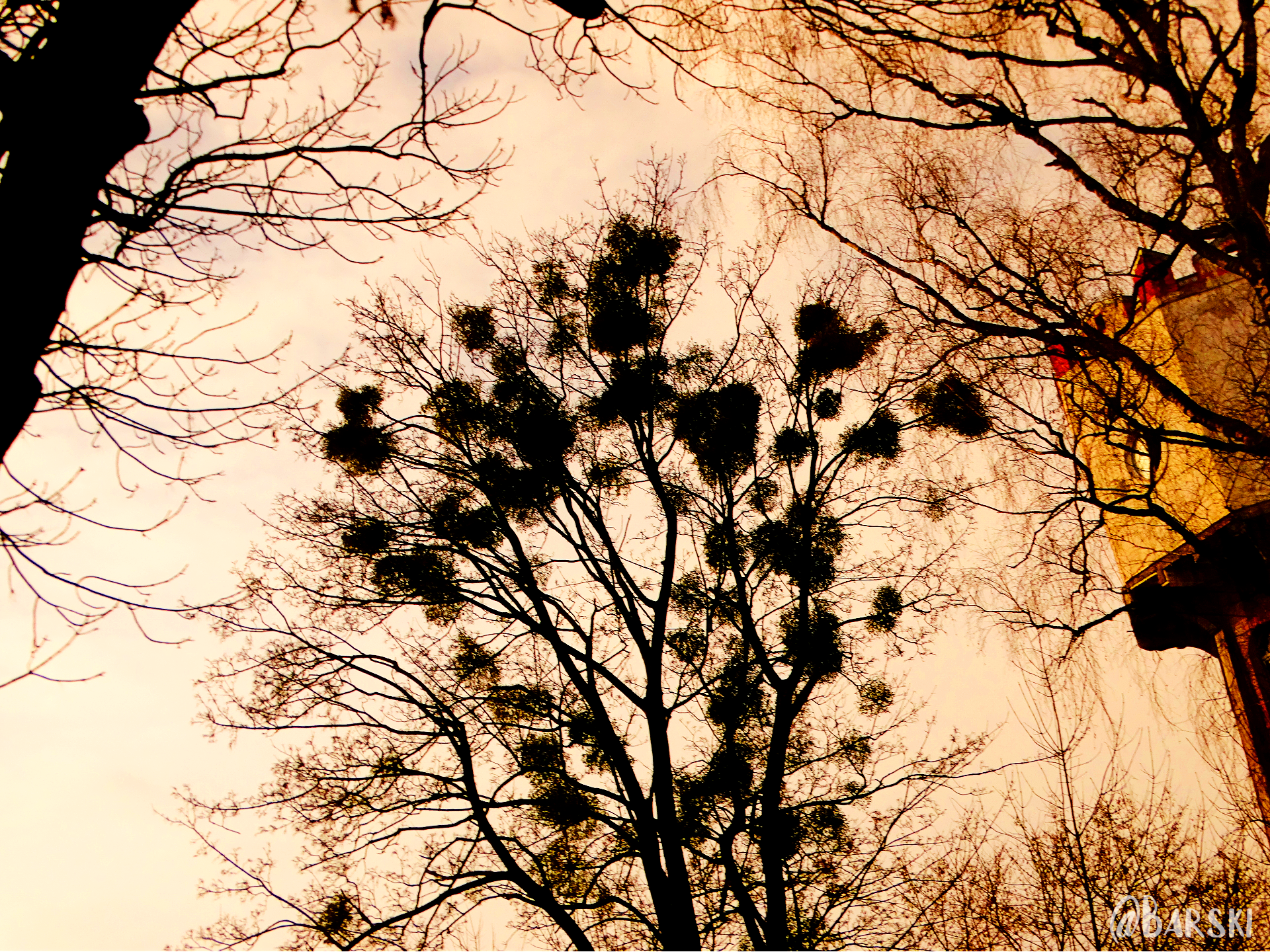
Photos taken with a Sony Cyber-shot DSC-HX300 camera
Author @barski
Ukraine
Posted with STEMGeeks
Electronic-terrorism, voice to skull and neuro monitoring on Hive and Steem. You can ignore this, but your going to wish you didnt soon. This is happening whether you believe it or not. https://ecency.com/fyrstikken/@fairandbalanced/i-am-the-only-motherfucker-on-the-internet-pointing-to-a-direct-source-for-voice-to-skull-electronic-terrorism
!LUV
!PIZZA
!BEER
@eii(3/10) gave you LUV. H-E tools | connect | <><
H-E tools | connect | <><
You're invited! - LUV's 1st birthday celebration!
Я вспомнил, что давно не ел пиццу)
!BEER
View or trade
BEER.Hey @eii, here is a little bit of
BEERfrom @barski for you. Enjoy it!Learn how to earn FREE BEER each day by staking your
BEER.PIZZA Holders sent $PIZZA tips in this post's comments:
@eii(1/5) tipped @barski (x1)
Learn more at https://hive.pizza.